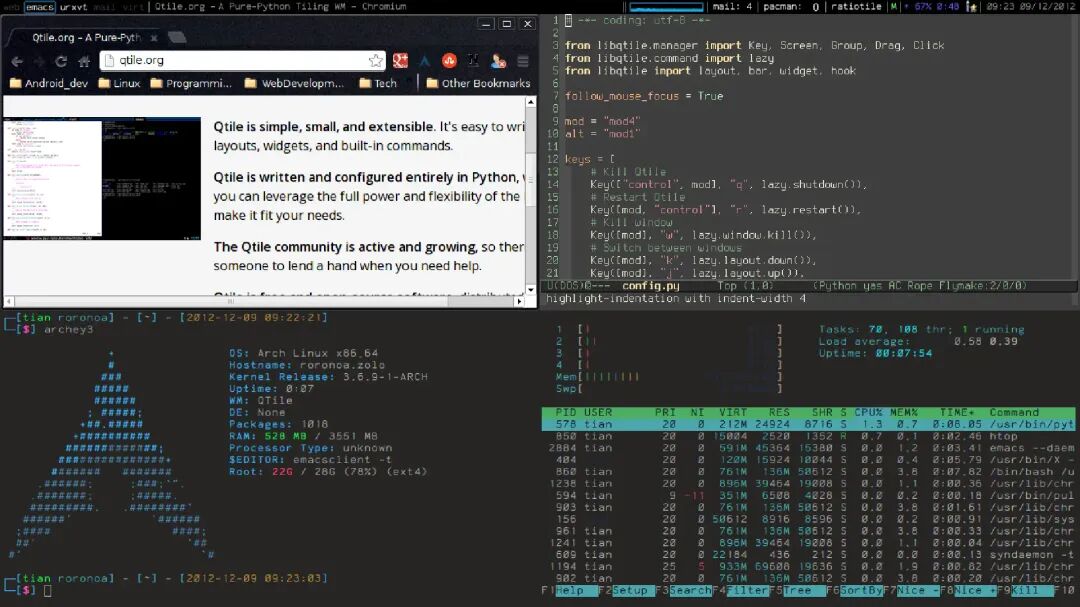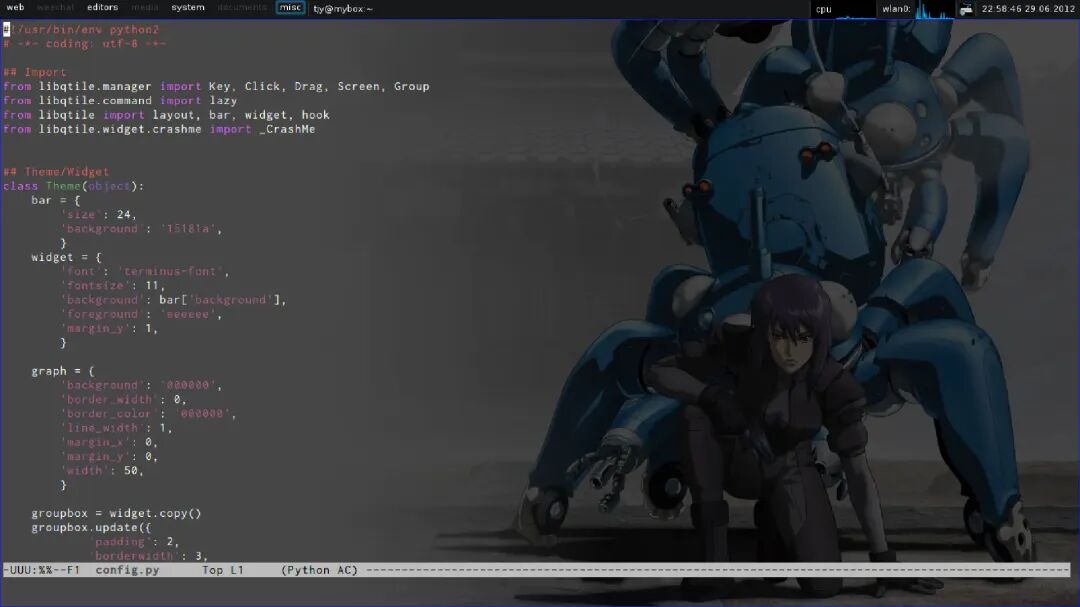Qtile is not just an ordinary window manager; it is a fully-featured and highly customizable tiling window manager written and configured in Python. It is not merely a tool but a platform that allows you to control your desktop environment through code, achieving a highly personalized window management experience. This article will take you deep into the features and advantages of Qtile and how it empowers you with unprecedented control over your desktop.

Elegant Python Configuration: Say Goodbye to Complicated Configuration Files
Most window managers rely on complex configuration files filled with hard-to-understand options and syntax. Qtile disrupts this tradition by using Python entirely for configuration. This means you can leverage Python’s powerful capabilities and concise syntax to customize your desktop in a clear and readable manner. Say goodbye to those headache-inducing configuration files and build your ideal window management environment with Python code, which is a pleasure in itself. You can easily create custom layouts, write scripts to automate your workflows, and even extend Qtile’s functionality to perfectly fit your needs.

Flexible and Diverse Layouts: Adapt to Your Working Style
Qtile offers various built-in layouts, such as the common <span>Max</span>, <span>Stack</span>, <span>TreeTab</span>, and <span>Columns</span>, to meet different usage scenarios. But this is just the beginning; the real power of Qtile lies in your ability to customize layouts. You can write your own layout algorithms to create unique window arrangements that best organize your windows and enhance your productivity. Imagine being able to dynamically adjust window layouts based on different projects or tasks, keeping your desktop environment in optimal condition. This flexibility is unmatched by other window managers.
Powerful Command Line Interface: Control Everything
Qtile features a powerful command line interface that allows you to control and monitor almost every aspect of Qtile via the command line. You can create custom commands to quickly perform various operations, such as switching workspaces, moving windows, and adjusting layouts. This command line interface not only improves efficiency but also opens up possibilities for automation. You can write scripts to automatically execute a series of operations, such as launching specific applications at certain times or adjusting window layouts based on specific conditions.
Fully Programmable: Unlock Infinite Possibilities
The true charm of Qtile lies in its programmability. You can write Python scripts to extend Qtile’s functionality and implement any features you desire. You can create custom widgets to display system information, network status, time, and more; you can write custom commands to automate your workflows; and you can even create custom layouts to craft a unique window management experience. This high degree of programmability makes Qtile a powerful tool that can perfectly adapt to your working style and personal preferences. You can fully utilize your programming skills to build a truly personalized desktop environment.
Cross-Platform Compatibility: Dual Support for X11 and Wayland
Qtile supports both X11 and Wayland display server protocols, meaning it can run on various Linux distributions and fully leverage the modern features of Wayland. This makes Qtile a highly compatible window manager that can be widely applied across different Linux system environments.
Comprehensive Unit Testing: Stable and Reliable
Due to its high programmability and extensibility, the Qtile development team places great importance on unit testing. This results in Qtile having high stability and reliability, reducing the likelihood of errors and crashes. You can use Qtile with confidence, without worrying about unexpected system crashes or data loss.
Conclusion
Qtile is not just a window manager; it is a powerful, highly customizable desktop environment building platform. Through Python programming, you can fully control your desktop experience and create a unique working environment. Its flexibility, programmability, and stability make it an attractive choice, especially for Linux users who seek personalization and efficiency. If you are tired of monotonous desktop environments and crave a digital space that you can fully control, then Qtile is your ideal choice.
Project Address: https://github.com/qtile/qtile